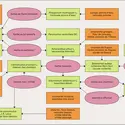NOMS VERNACULAIRES, botanique
Article modifié le
Bibliographie
Approche générale ou théorique
J. Barrau, An Ethnobotanical Guide for Anthropological Research in Malayo-Oceania, U.N.E.S.C.O. Scientific Cooperation for South-East Asia, Yale University and Laboratory of Ethnobotany, Paris, 1965
B. Berlin, « Folk Systematics in relation to biological classification and nomenclature », in Ann. Rev. of Ecology and Syst., iv, 1973 ; « The Concept of rank in ethnobiological classification : some evidence from Aguaruna folk botany », in Amer. Ethn., III, n0 3, 1976
H. C. Conklin, Folk Classification, Yale University Publ. in Anthropology, New Haven (Connecticut), U.S.A., 1980 ; « Lexicographical Treatment of folk taxonomies », in Householder and Soporta, pp. 119-141, 1962
C. Friedberg, « Les Méthodes d'enquête en ethnobotanique : comment mettre en évidence les taxonomies indigènes ? », in JATBA, XV, n0 7-8, Muséum national d'histoire naturelle, Paris, 1968 ; « Les Processus classificatoires appliqués aux objets naturels et leur mise en évidence : quelques principes méthodologiques », in JATBA, XXI, n0 10-12, pp. 313-334, 1974
P. Garnier, Essai de phytonymie populaire comparée : du lituanien au zoulou et du navaho au chinois, études et recherches de corrélations en une cinquantaine de langues, thèse, Faculté de pharmacie, Marseille, 1983 ; Les Herbes, les arbres, les peuples : leurs noms, Maloine, Paris, 1987
A.-G. Haudricourt & L. Hédin, L'Homme et les plantes cultivées, A.-M. Métailié, Paris, 1987
L. Hédin, Les Objectifs de l'ethnobotanique, travaux de l'Académie des sciences, belles-lettres et arts de Rouen 1954-1956, Rouen, 1957
O. Werner, « Systematized Lexicography or ethnoscience : the use of computer-made concordances », in American Behavioral Scientist, X, n0 5-8
O. Werner & J. Fenton, « Method and theory in ethnoscience or ethnoepistemology », in A Handbook of Method in Cultural Anthropology, pp. 537-578, R. Naroll & R. Cohen éd., Columbia University Press, New York & London, 1970.
Dictionnaires ou grands ouvrages multilingues
L. L. Balashev, Dictionnaire des plantes utiles en vingt langues européennes, Publ. House Wauka, Moscou, 1970
A. K. Bedevian, Illustrated Polyglottic Dictionary of Plant Names in Latin, Arabic, Armenian, English, French, German, Italian and Turkish Languages including Economic, Medicinal, Poisonous and Ornemental Plants and Common Weeds, Argus & Papazian, Le Caire, 1936
L. Brako, A. Rossman & D. F. Farr, Scientific and Common Names of 7,000 Vascular Plants in the United States, The American Phytopathological Society, St. Paul (Minnesota), 1995
A. Chandra, Elsevier’s Dictionary of Edible Mushrooms : botanical and common names in various languages of the world, Elsevier, Amsterdam, 1989 (noms en vingt-deux langues)
W. E. Clason, Elsevier’s Dictionary of Wild and Cultivated Plants in Latin, English, French, Spanish, Italian, Dutch and German, Elsevier, Amsterdam, 1989
Flore du Canada = Canadian Flora, Bulletin de terminologie no 156 (anglais-latin-français), Bureau des traductions de la Direction générale de la terminologie et de la documentation, éd. Approvisionnements et services Canada, Hull, Québec, 1974
P. Font Quer, Plantas medicinales, el Dioscórides renovado, Labor, Barcelona & Madrid, 1962 (noms en basque, catalan, espagnol, galicien, portugais)
H. Nikolov, Dictionary of Plant Names in Latin, German, English and French, J. Cramer, Berlin & Stuttgart, 1996
D. Z. Podbielowski, Słownik roślin użytkowych (Dictionnaire des plantes utiles), P.W.R.I.L., Warszawa, 1966 (noms en allemand, anglais, français, latin, polonais, russe)
E. Rolland, Flore populaire de la France, ou Histoire Naturelle des plantes dans leurs rapports avec la linguistique et le folklore, Rolland, Paris, 1896-1914 (noms français régionaux et en de nombreuses langues)
A. I. Schroeter & V. A. Panasiuk, Dictionary of Plant Names. Over 100,000 names of about 10,000 species and varieties of flowering plants and fern-like plants in Latin, Russian, English and Chinese (hieroglyphic and transliteration). Ed. by V. A. Bykov, Koeltz Scientific Books, Königstein, Allemagne, 1998
M. Wrobel & G. Creber, Elsevier’s Dictionary of Plant Names in Latin, English, French, German and Italian, Elsevier, Amsterdam, 1996.
Monographies
Parmi les innombrables monographies, on peut citer : H. C. Conklin, The Relation of Hanunóo Culture to the Plant World, thèse, Yale University, New Haven (Connecticut), 1955
J. do Espírito Santo, Nomes vernáculos de algumas plantas da Guiné portuguesa, Junta de Investigacões do Ultramar, Estudos, ensaios e documentos, n0 104, Lisboa, 1963 (noms dans une quinzaine de langues)
R. K. Gupta & B. K. Dutta, « Vernacular Names of the useful plants of North-West indian arid region », in JATBA, XIV, n0 10-11, 1967 (noms en plus de trente langues)
F. R. Irvine, Woody Plants of Ghana, Oxford University Press, London, 1961 (noms en une cinquantaine de langues)
J. Kerharo & A. Bouquet, Plantes médicinales et toxiques de la Côte-d'Ivoire - Haute-Volta, Vigot, Paris, 1950 (noms en plus de cent langues)
J. Soukup, Vocabulario de los nombres vulgares de la flora peruana, Col. Sales., Lima, 1970 (noms en une trentaine de langues).
Accédez à l'intégralité de nos articles
- Des contenus variés, complets et fiables
- Accessible sur tous les écrans
- Pas de publicité
Déjà abonné ? Se connecter
Écrit par
- Jean-Marie PRUVOST-BEAURAIN : diplômé en sciences de l'éducation, mathématique, économie, philosophie, ethnologie et bibliothéconomie
Classification
Autres références
-
NOMS VERNACULAIRES FRANÇAIS (botanique)
- Écrit par Jean-Marie PRUVOST-BEAURAIN
- 3 885 mots
- 2 médias
Chaque langue possède un champ lexical propre pour nommer les végétaux et les champignons, ou plutôt une partie d'entre eux, et ce qui s'y rapporte (cf. noms vernaculaires, botanique). La formation de ces noms étant en général tout à fait indépendante de la nomenclature scientifique...
Voir aussi


